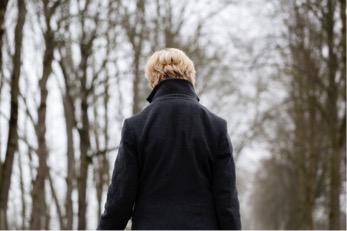What Is Seasonal Affective Disorder and Its Symptoms?
Do you or someone you know ever seem to get down with the changing of seasons, specifically in the fall or winter? Some may disregard these depressed feelings as simple mood swings or the “winter blues”, yet there exists a real disorder that may explain these feelings and depressed state. Seasonal Affective Disorder (SAD) is a form of depression that is directly affected by the change in seasons, generally in the fall or winter.
Fall is around the corner. For many, it’s a wonderful time of year with the bright colors of leaves, slightly cooler temperatures, and pumpkin-flavored recipes and scents. For others, the diminishing daylight and signs of an eventual winter can lead to a depressive state. So how can you know if you have SAD or if it affects someone close to you, like a spouse or child?
Symptoms
Generally, symptoms begin showing in late fall as winter approaches. There are cases where others experience these symptoms in the spring or summer; regardless, the symptoms are mild in the beginning, but get progressively worse throughout the season. The symptoms are very similar to depression, but only come and go with seasonal changes. Such symptoms may include:
● Low energy
● Depressive states throughout the day
● Little interest for activities
● Lack of sleep or the desire to sleep more
● Feeling sluggish or irritated
● Anxiety
● Weight gain
● Lack of concentration
● Thoughts of suicide
The symptoms may vary depending on one experiencing fall and winter SAD versus spring and summer SAD, but there is a lot of common ground.
How Do I Know If I Have SAD or Some Other Form of Depression?
It can be difficult determining if you or a loved one suffers from SAD or another form of depression, since the symptoms are often the same. However, if these symptoms only recur during the same time of year, then it’s a strong indication that it is SAD. Your doctor will want to know if these recurring symptoms have happened at least 2 years consecutively. You doctor may also ask if you have a relative who has also been diagnosed with SAD or has shown related symptoms.
Treatment
Everyone has bad days, or even days with a case of “winter blues,” but if you find yourself experiencing the above symptoms day after day, then it’s time to meet with a doctor. Light therapy is one of the most common forms of treatment for SAD. The lack of sunlight has been known to be a determining factor in many patients with SAD; therefore, light therapy has proven to be effective by reproducing outdoor light, which is directed at the patient. Light therapy can cause a change in brain chemicals which can also relieve many symptoms.
Psychotherapy and medication have also been known to help patients diagnosed with SAD, particularly those who experience more extreme symptoms. Through psychotherapy, you can learn to identify your depressive thoughts and behaviors as well as healthy ways to cope with your symptoms.
If you live in New York City and are in need of a psychiatrist who specializes in psychotherapy, contact Dr. Anthony Termine today.
—
SOURCES:
http://www.mayoclinic.org/diseases-conditions/seasonal-affective-disorder/basics/treatment/con-20021047
http://www.webmd.com/mental-health/tc/seasonal-affective-disorder-sad-topic-overview?page=2
http://www.medicinenet.com/seasonal_affective_disorder_sad/article.htm

